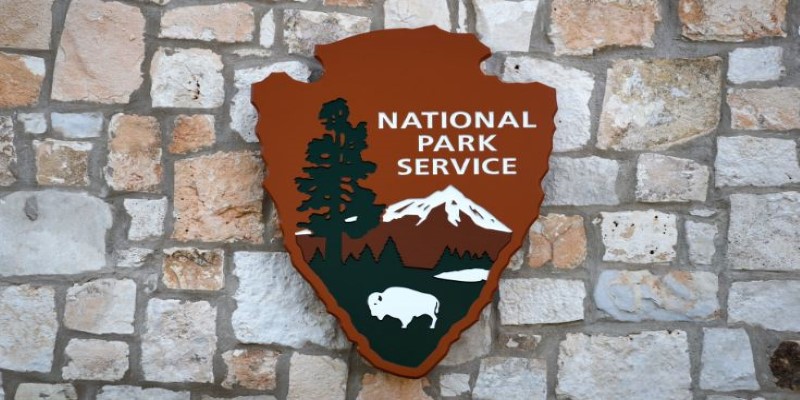Making History Last: A Comprehensive Guide to the Rehabilitation Credit for Historic Preservation
Dec 13, 2024 By Susan Kelly
Saving historic buildings isnt just about preserving beautiful structures; its about protecting our history, culture, and architectural heritage. The Rehabilitation Credit for Historic Preservation offers a compelling way to achieve this while making the financial side of restoration more manageable. With tax credits specifically designed for those rehabilitating historic properties, this credit makes it easier for property owners to invest in costly renovations. Its not only a means to enhance our towns and cities with beautifully preserved spaces, but its also a savvy financial tool for those looking to reduce their tax burden.

Whether it is an individual or a business, rehabilitation credit for historic preservation gives room to transform the many challenges posed by historic renovation into possible opportunities. In this guide, we walk you through the rehabilitation credit so that you understand why it has become one of the most valuable incentives for historic preservation efforts across America.
What Is the Rehabilitation Credit for Historic Preservation?
Rehabilitation Credit for Historic Preservation is a federal tax incentive for the restoration and preservation of historic buildings in the United States. This means the property owners can claim a portion of their federal income tax for rehabilitating the qualifying structures as long as the structures qualify by meeting certain specified criteria. The property qualifies for the register or documentation from the NPS to be contributing to a historic district on the National Register of Historic Places. The credit only applies to properties that generate income, such as commercial buildings and apartments, not private homes. This program assists in the preservation of significant cultural properties, job creation, and revitalization of communities by offering incentives towards restoration instead of letting the historic areas deteriorate to the point of having to demolish them.
How Does the Rehabilitation Credit Work?
The Rehabilitation Credit for Historic Preservation is determined using a percentage of the QREs spent on restoring the building. In most cases, this credit provides 20 percent off of the QREs; however, this varies depending on the type of building and the basis of qualification. QREs have specific guidelines that they must abide by, so these expenses would typically include labor, materials used in the restoration, structural improvements, and architectural services.

To qualify for the credit, property owners must follow a set process, often beginning with a Part 1 certification to confirm that the building is historically significant. This certification, typically conducted through the NPS, verifies that the building is either listed or eligible for the National Register of Historic Places. Once approved, the restoration process must adhere to the Secretary of the Interiors Standards for Rehabilitation, which are guidelines aimed at preserving the propertys historic character. After completing the rehabilitation project, the final step is the Part 3 certification, where NPS reviews the work to ensure it aligns with the standards. Once the project is certified, property owners can claim their credit, reducing their federal income tax liability.
Eligibility and Application Process for Property Owners
If youre considering applying for the Rehabilitation Credit, the first step is to verify that your property meets the necessary criteria. The property must be a certified historic structure or contribute to a recognized historic district. This requirement makes historic registration or certification essential, especially if the building isnt already recognized. To determine eligibility, the NPS and your states historic preservation office can provide guidance on the initial evaluation process.
Once your property qualifies, the process includes a three-part application submitted through both the state preservation office and the NPS. The process begins with the Part 1 evaluation, which confirms your propertys historic significance. This is followed by the Part 2 application, where you outline the proposed rehabilitation plans, including materials, techniques, and any structural adjustments.
After NPS approves these plans, you can proceed with the rehabilitation according to the standards set. Its crucial to adhere to the Secretary of the Interiors guidelines, as non-compliant work can result in disqualification from the tax credit. Upon completion, you submit Part 3, where NPS inspects the work and certifies it as qualifying for the tax credit. The approved credit can then be claimed on your federal tax return, offering substantial savings on rehabilitation expenses.
Benefits and Challenges of the Rehabilitation Credit on Communities
The Rehabilitation Credit for Historic Preservation brings several benefits to communities but also comes with some challenges.
Benefits
One of the primary benefits of this credit is economic revitalization. By restoring historic buildings, communities often attract new businesses, tourism, and local investments, transforming underutilized areas into vibrant economic hubs. Additionally, restoration projects create local jobs, from construction and skilled trades to hospitality and retail, benefiting the entire economy. Socially, these restored buildings help preserve cultural heritage, offering residents a tangible connection to their past, which fosters a sense of community pride and identity. Environmentally, rehabilitation is more sustainable than new construction, reducing waste and conserving resources by repurposing existing materials.
Challenges

However, accessing the Rehabilitation Credit comes with challenges. The qualification process can be complex, requiring properties to meet strict historical standards set by the National Park Service (NPS). Compliance with the Secretary of the Interiors Standards for Rehabilitation can also increase project costs, as specialized materials and craftsmanship may be needed to preserve the buildings character. Securing upfront financing is another challenge, as the credit can only be claimed after the project is completed. Property owners often need to work closely with preservation experts and sometimes face coordination issues with multiple agencies, making the process time-consuming and detail-intensive.
Conclusion
The Rehabilitation Credit for Historic Preservation reflects our commitment to preserving history and culture. By offering financial incentives, it enables property owners to restore historic buildings, transforming them into community assets. This credit has revived countless structures across the country, fostering local pride and economic growth. For those dedicated to safeguarding Americas architectural heritage, it provides both a tax benefit and a chance to make a lasting impact. Through these preservation efforts, owners contribute to the shared heritage that enriches our towns and cities for future generations.








